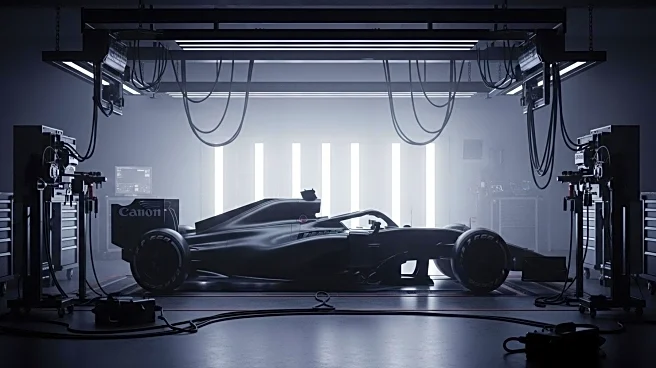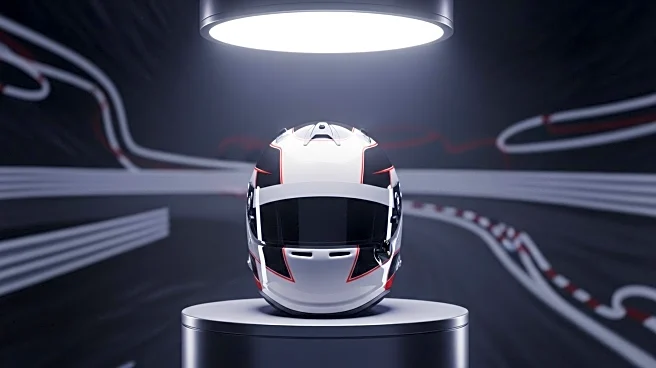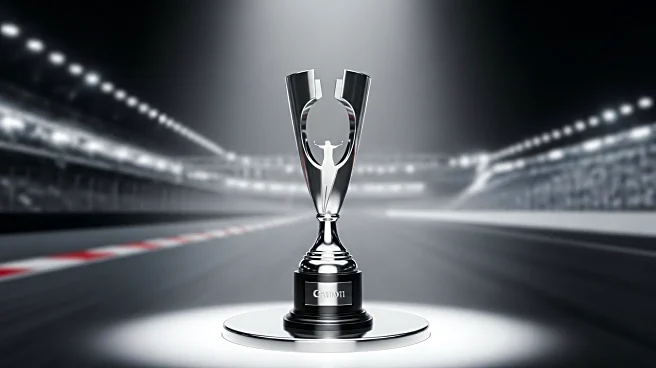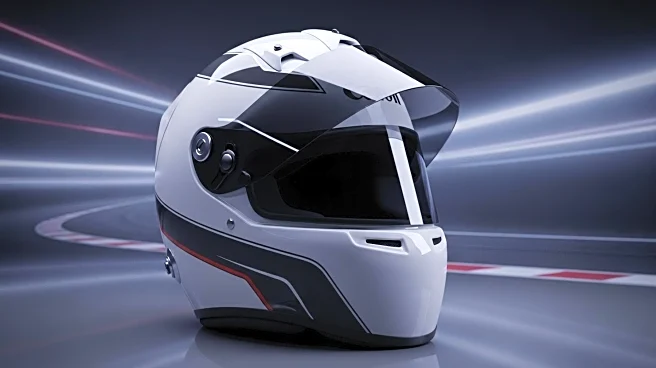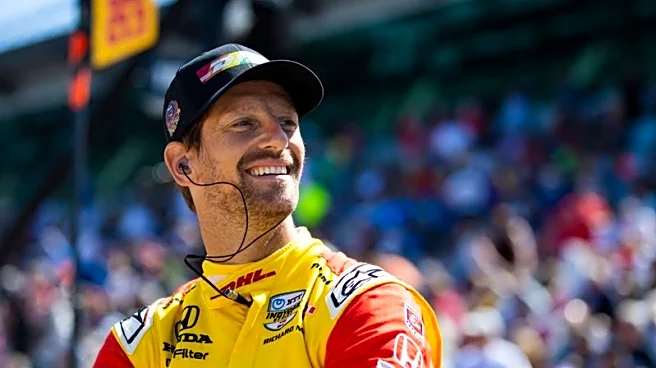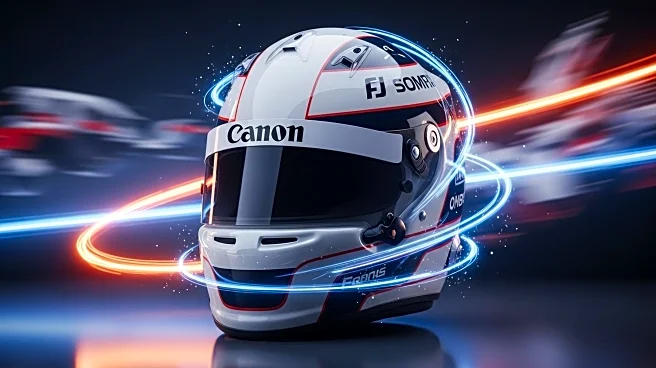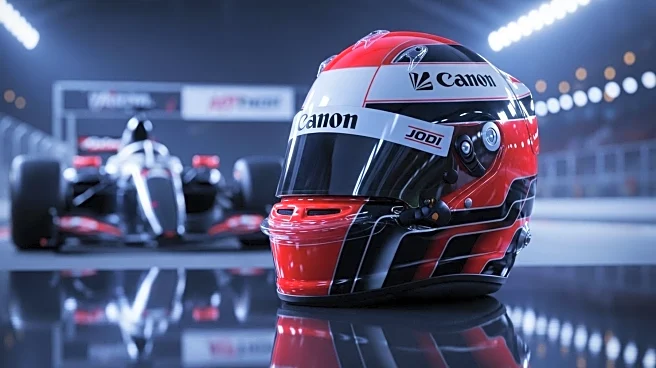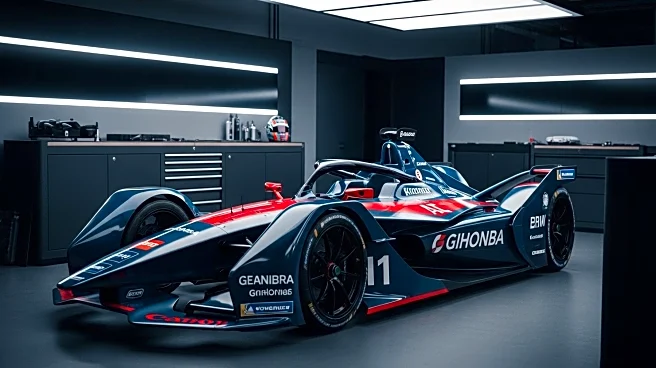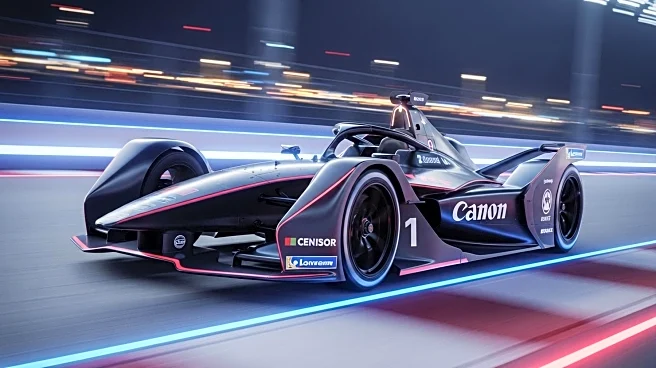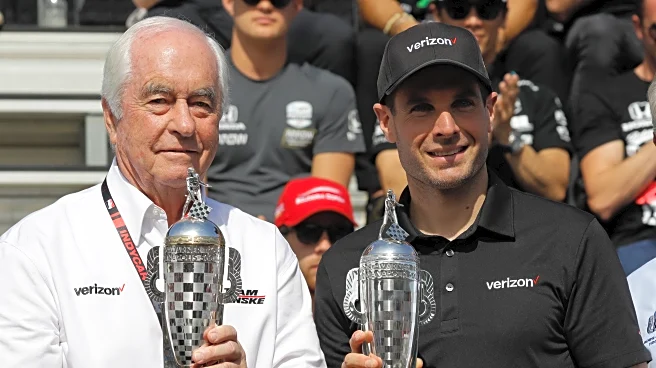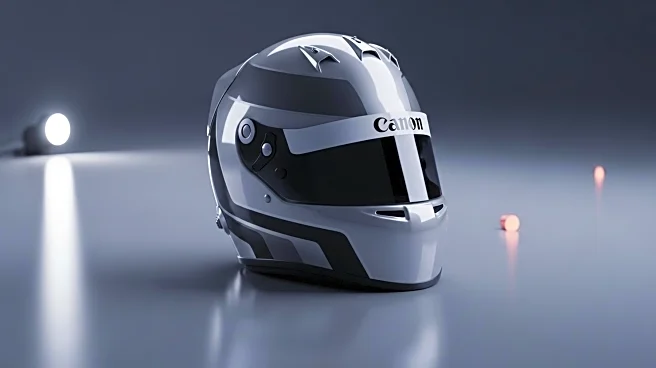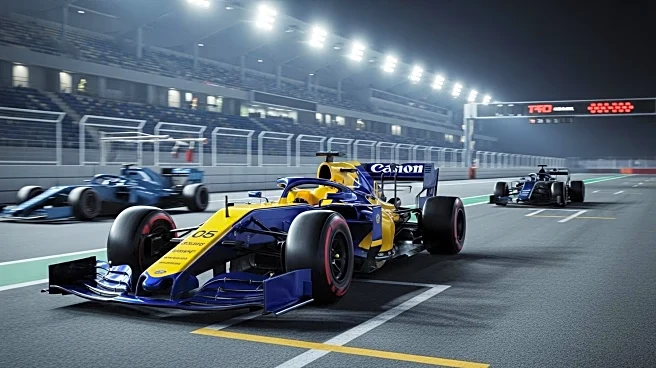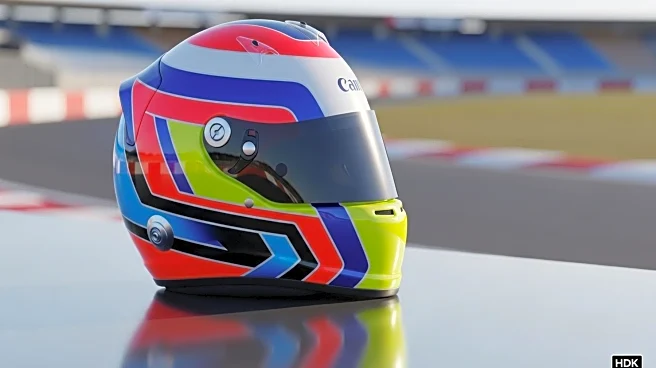What is the story about?
What's Happening?
Romain Grosjean is set to drive a Formula 1 car for the first time since his dramatic crash at the 2020 Bahrain Grand Prix. The crash, which occurred on the first lap, resulted in a 67G impact that split his Haas VF-20 car in two and ignited a fireball. Grosjean emerged with burns to his hands, preventing him from participating in the final two races of the season. Now, Haas has announced that Grosjean will reunite with his former team for a test at the Mugello circuit in Italy, driving a VF-23 chassis. The test will be overseen by Haas team principal Ayao Komatsu, Grosjean's former race engineer, along with other former team members. Grosjean expressed excitement about the opportunity, noting the significance of returning to F1 with his old team. The test will also feature James Hinchcliffe, a former IndyCar rival, who will have his first run in an F1 car.
Why It's Important?
Grosjean's return to Formula 1 testing is significant as it marks a moment of closure and celebration for his career, which was abruptly halted by the crash. It highlights the resilience and passion of athletes who overcome adversity to return to their sport. For Haas, this test serves as a tribute to Grosjean's contributions to the team and offers a chance to reconnect with past team members. The event also underscores the importance of safety advancements in motorsport, as Grosjean's survival and recovery from the crash were aided by improved safety measures. Additionally, the inclusion of James Hinchcliffe in the test reflects the ongoing collaboration and exchange between different racing disciplines, promoting cross-industry growth and innovation.
What's Next?
Following the test, Grosjean may continue to explore opportunities within motorsport, potentially leveraging his experience in F1 and IndyCar. The test could also lead to further collaborations between Haas and other racing entities, fostering innovation and talent development. For Grosjean, this event may serve as a stepping stone to future roles in racing, whether as a driver, mentor, or commentator. The test may also influence Haas's approach to heritage and legacy projects, as they continue to honor past drivers and team members.
Beyond the Headlines
Grosjean's return to F1 testing highlights the emotional and psychological aspects of sports recovery, emphasizing the importance of mental resilience alongside physical healing. It also raises questions about the long-term impact of traumatic experiences on athletes and the support systems available to them. The event may inspire discussions on the role of nostalgia and legacy in sports, as teams and athletes seek to honor their past while looking to the future.
AI Generated Content
Do you find this article useful?
